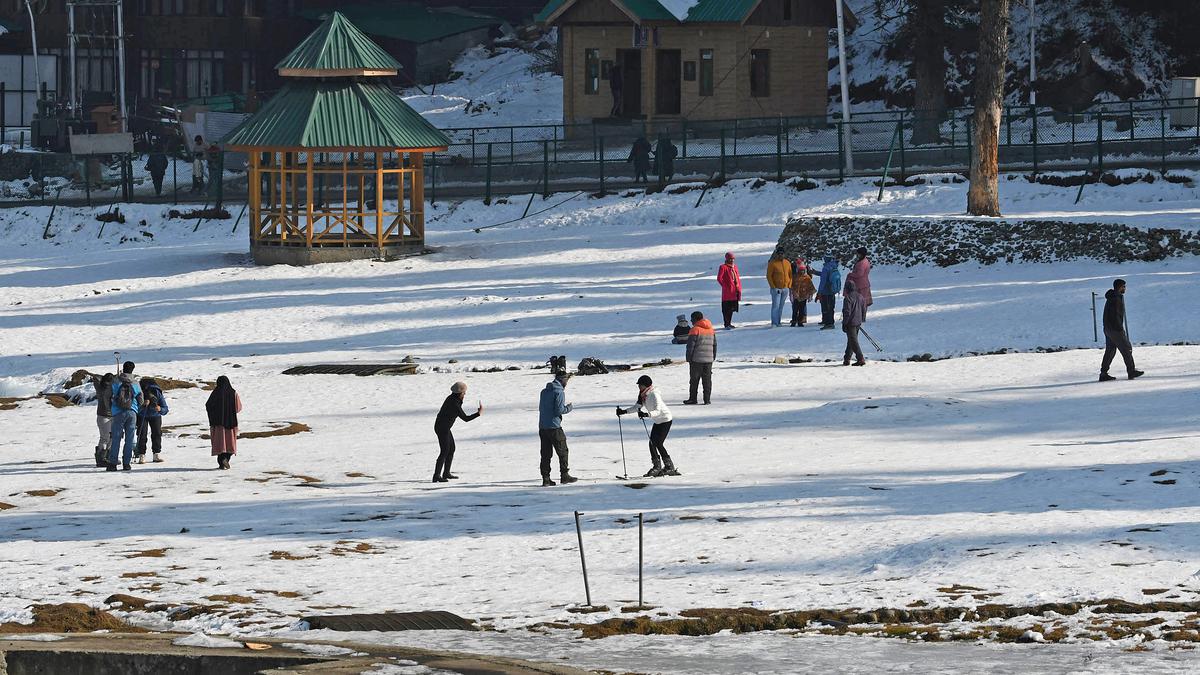
Scant snow at Gulmarg’s famous ski slopes herald an ominous sign of changing weather
The Hindu
Gulmarg, Kashmir's winter wonderland, faces snowless ski slopes due to global weather patterns and El Nino. Disappointing skiers from India and abroad.
Gulmarg, known as Kashmir’s winter wonderland as snow falls heavily, is unable to open its famous ski slopes this year, disappointing enthusiasts from India and abroad. A tourism favourite at an altitude of 8,694 feet, Gulmarg’s bare hillsides are now a barometer of changing global weather patterns and their impact on Kashmir.
The meadow, usually teeming with skiers enjoying training sessions in January, is empty and silent. Chairlift and snow-beaters are not functioning. Patches of melting snow are seen where once four to six feet of accumulated snow delighted visitors.
Tauseef Rathore, training in-charge at the Indian Institute of Skiing and Mountaineering (IISM), Gulmarg, is upset. “There are no ski training sessions in the main bowl this year so far. We are using slopes of Bota Pathri (about seven kilometres from the main bowl) for training as snow has not completely melted there in the shade of the tree line,” Mr. Rathore told The Hindu.
“We only manage ski training and fun skiing at Apharwat. The long run from Apharwat to the main bowl has not happened this year,” he added. A minimum of two feet of snow is required for safe skiing, and the chairlift only functions when over two-and-a-half feet of snow accumulates.
Skiers, especially Europeans, are known to enjoy Gulmarg’s long runs on safe slopes, with rare powder snow of about six feet. Gulmarg is the only destination in Kashmir to offer powder snow and skiers train here for international events. “There is a dwindling footfall of skiers from many countries this year,” Aziz Ahmad, a local ski shop owner, said.
Data from the India Meteorological Department shows precipitation of 17.6 mm was recorded in Gulmarg in December 2023 compared with 255.2 mm in 2020, a significant drop.
Jammu and Kashmir’s winter capital Srinagar is yet to see snowfall this year. South Kashmir’s Qazigund, home to several mountain ranges that feed rivers running down to central and north Kashmir, recorded precipitation of 21.2 mm in December against 217.8 in 2019, also a major dip.











